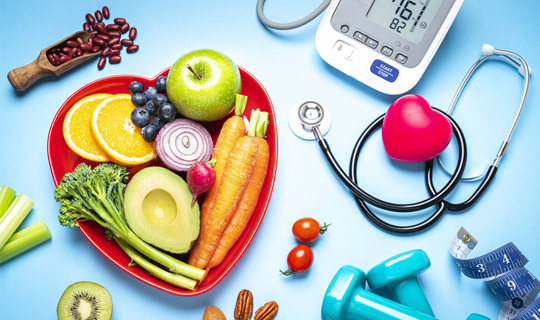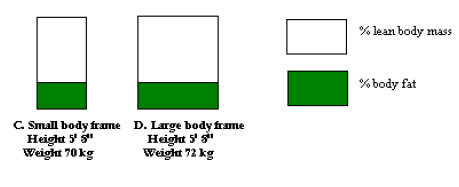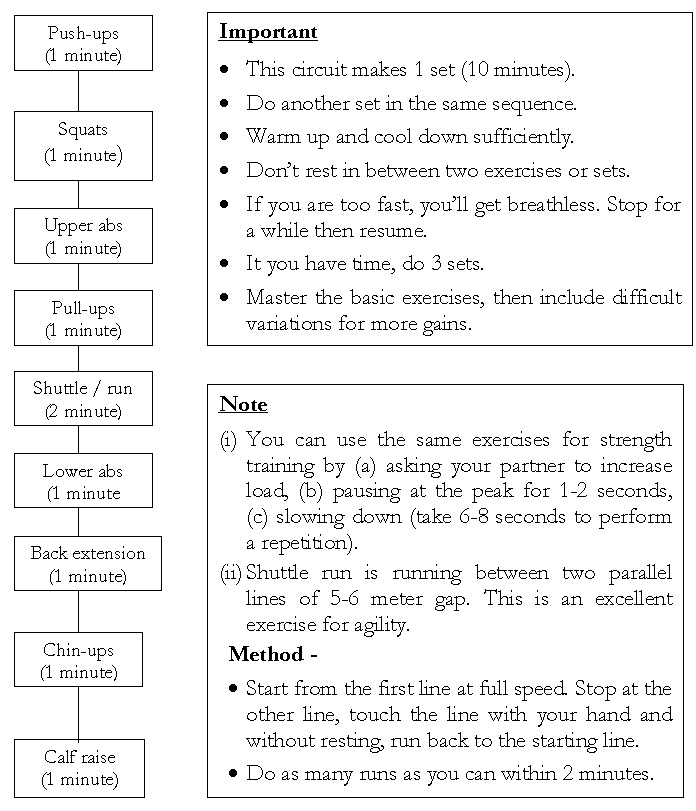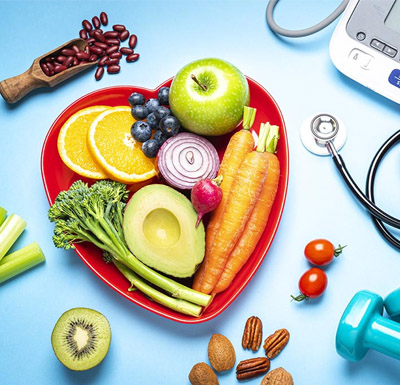
I. INTRODUCTION
The term ‘weight management’ refers to maintenance of one’s weight within a healthy range, being neither overweight nor underweight. Overweight or obesity can be defined as an abnormal or excessive fat accumulation in our body. Overweight and obesity affect one’s day to day physical performance. What is more important, these are major risk factors for heart disease, stroke, type II diabetes, osteoarthritis and certain forms of cancers. On the other hand, being underweight makes one vulnerable to gastrointestinal diseases and affects immune system adversely. Parents and teachers may please take note that as per World Health Organization (WHO) report, childhood obesity is associated with a higher chance of premature death and disability in adulthood1.
The problem of overweight is so huge and widespread that WHO has termed it ‘global epidemic’. It is no longer confined to developed countries; it is increasing at faster rate in developing countries. As per WHO report, in 2005, globally approximately 1.6 billion adults (age 15+) were overweight and at least 400 million of them obese.
However, the good news is that the problem of overweight and obesity is largely preventable. And, the solution lies in an intelligent mix of balanced diet, regular exercise and positive mind-set.
1. WHO Obesity and overweight:: www.who.int/mediacentre/factssheets/fs311/en/index.html dated 25.01.2008
2. Ibid
Back to top >
II. Causes of overweight
For a normal person who is not suffering from any medical abnormality, the fundamental cause of overweight and obesity is more caloric intake and less caloric expenditure. This caloric imbalance may occur due to following reasons –(i) Aging process – With age our body composition3 changes. There is an increase in fat percentage and decrease in fat free mass. Consequent to this, our Resting Metabolic Rate (RMR) declines. The decline in RMR means that our body now requires less number of calories for its maintenance. Failure to adjust our caloric intake to changed body composition leads to weight gain.
(ii) Sedentary life style – Increasing urbanization, sedentary nature of work, widespread use of mechanized transport give us less scope for physical activity. Ignoring this fact and continuing with higher caloric intake contributes to weight gain.
(iii) Discontinuation of exercise – Those earlier accustomed to regular physical exercise may suddenly discontinue exercise due to illness, work commitment or out of sheer laziness, yet continue with the usual high caloric intake. This would surely cause weight gain. It is not very uncommon to see many ex-sportspersons walking with those extra tyres of fat around their waist, for this reason only.
3. Body composition is the percentage distribution of fat and fat free mass in our body. Fat free mass includes muscles, bones, water and other non-fatty tissue.
(iv) Junk food – Frequent and indiscriminate consumption of junk foods is a major cause of overweight and obesity, especially among children. Junk foods are very high in calories due to their high contents of fats, sugar and salts. While high calories from fats and sugar directly contribute to weight gain, salt contributes so by causing more water retention in the body.
(v) Poor understanding of exercise and nutrition – The relationship between amount of calories spent and calories gained has to be understood properly. Remember this simple common sense formula – for weight maintenance, caloric expenditure should be equal to caloric intake; for weight loss, caloric expenditure should be more than caloric intake and for weight gain, caloric expenditure should be less than caloric intake. Some of the new comers to exercise have a tendency to overestimate their energy expenditure during exercise and taking it as a licence to consume high calories food. This results into imbalance between caloric intake and caloric expenditure.
III. WHAT IS THE IDEAL BODY WEIGHT (IBW) ?
We are a generation obsessed with weight management. We are always in quest of an ideal body weight. We starve ourselves to ridiculous extent, put more faith in miracle machines, devour magic pills and spend thousands of rupees to visit slimming centres.
The question is – what is the ideal body weight (IBW) for a person? The answer is – this is a WRONG question. In fact, there is NO ideal body weight for any one.
From time to time, efforts have been made to devise some sort of Height-Weight Tables to determine IBW for a corresponding height. For example, Metropolitan Life Insurance Height & Weight Table (1980), developed by Metropolitan Life Insurance Company, was based on data associated with long life of the subjects who were closer to average IBW.
Later, Body Mass Index (BMI) came to be widely accepted as a simple, quick and convenient method for determination of overweight and obesity. BMI is calculated by dividing weight in kilograms by height in meters squared.

IBW is measured at a BMI between 18.5-24.99 Kg/m2, overweight at a BMI of 25 kg/m2 or more and obesity at a BMI of 30 kg/m2 or more. These cut offs are based on association between BMI and chronic disease and mortality and have been adopted by the World Health Organization (WHO). Please see the following table –
| Classification of Overweight and Obesity by BMI | ||
|---|---|---|
| Obesity class | BMI kg.m2 | |
| Underweight | < 18.5 | |
| Normal | 18.5-24.9 | |
| Overweight | 25.0-29.9 | |
| Obesity | I | 30.0-34.9 |
| II | 35.0-39.9 | |
| Extreme obesity | III | ≥40 |
However, despite its wide acceptability and use, the concept of BMI suffers from the following limitations:
(i) BMI is not a valid4 method to assess body fat. It is based on a simplistic presumption that ‘overweight’ is due to excess fat and hence more the fat, greater the risk of diseases. Therefore, being ‘overweight’ is always undesirable. This presumption is not true. BMI lacks validity as it
4. Validity refers to the degree to which a test measures what it is supposed to measure. BMI cannot measure fat.
does not distinguish excess adiposity (fatness) from greater muscularity. In other words, it ignores the fact that overweight can also be caused by greater muscularity or a larger body frame. For example, sportspersons like bodybuilders, heavyweight boxers, footballers, sprinters etc. may be ‘overweight’ or even ‘obese’ by BMI standards despite their excellent athletic ability and low body fat percentage.
There is a distinction between overweight due to excess fat and overweight due to excess muscularity. When your overweight is due to excess fat, it is a liability. It will reduce your physical performance and increase the risk of certain diseases. Such overweight is harmful, hence undesirable and a matter of concern. On the other hand, if your overweight is due to extra muscle gain, it will contribute to your better physical performance. Such overweight is useful hence desirable and a matter of celebration. Look at the following illustration–

In above illustration BMI will blindly place both A and B in the same category. Whose health is more at risk? You cannot find any answer from BMI. Actually, in case of the person B, high % fat is a matter of concern while for A, low % fat and high % lean body mass is a matter of celebration though both of them have the same weight.
(ii) BMI ignores the element of body frame size.A person of same height and body composition but of larger body frame may weigh more than his medium or small body frame counterpart. But for all three body frame sizes, the same IBW has been fixed. Thus when we prescribe the same IBW for all body frame sizes and allow a concession of 10% (beyond which one would be categorized as overweight), it practically means allowing a narrower range of concession to a person of larger body frame (as he is already heavier due to his larger skeletal frame). This is not a fair practice.
Look at the following illustration –

(iii) BMI is not a suitable measure of ideal weight in case of children. For adults who have stopped growing, BMI method presumes that thereafter an increase in their weight will by caused by an increase in their body fat. In case of children, their amount of body fat keeps on changing as they grow up. Their BMI may decrease during early school days (due to shedding of baby fat) and then again increase as they grow into adulthood (due to increased muscle mass and larger body frame).
(iv) Similarly, BMI will underestimate the amount of body fat of an elderly person. I have found many persons declaring with satisfaction (and pride) that over the years they have maintained their ideal weight. Take example of a person who weighed 70 Kg at age of 20, 40 and 60.
Look at the following illustration –

It is clear from this illustration that weight of the person has remained in an ideal weight range throughout despite increase in % body fat over the years (which is not a healthy sign). This person has lost muscle mass, bone mass and is still happy about his weight!
By now, it must be fairly clear that it is not the ‘overweight’ as such but it is rather the ‘over fat’ which should be of our real concern.
Now, the question arises – what is the ideal body fat (IBF)?
Back to top >
Medical disclaimer - The website content is provided for general educational purpose only. It does not substitute professional medical advice. Reader is advised to consult his doctor before starting any fitness program to avoid any health risks.
IV. WHAT IS THE IDEAL BODY FAT (IBF)?
Unfortunately, unlike Body Mass Index (BMI) there is no universally accepted set of body fat standards. Different studies have recommended for a minimal essential fat percentage of total body weight. Minimal fat is the body fat that is necessary for health. It is essential for our nervous system, cell membranes, regulation of body temperature and production of sex hormones. According to American College of Sports Medicine (ACSM), minimal fat percentage for men and women should be 5% and 10-12% of total body weight respectively5. Body fat less than 10-12% in women may lead to bone-thinning disease osteoporosis. The healthy range of fat percentage may go upto 25% and 38% for men and women respectively6. US Army standards allow upto 26% and 36% for men and women above 40 respectively7. There are so many other studies which recommend an ideal fat % range with slight variations. Let’s not embark upon this endless journey of finding ‘the ideal body fat’.What is important for us is that we should be well within healthy range of body fat percentage. Lower the body fat percentage, the better will be our physical performance.
5. ACSM’s Resource Manual, Fifth Edition, p.204.
6. Ibid
7. US Army Physical Fitness, p.50.
How to Measure Body Fat?
Well, this is the most intriguing part of the entire problem. Body fat can be measured by any of these methods, viz., Hydrostatic Weighing, Air Displacement Plethysmography (ADP), Bioelectric Impedence Analysis (BIA), Ultrasound, Dual Energy Projection Method, Magnetic Resonance Imaging (MRI), Anthropometry (by measuring body parts, e.g., waist-hip ratio and skin fold calipers method). None of these methods is perfect and has its own limitations and error margin.
Let the complexity of methods mentioned above for body fat measurement not worry you at all. I would suggest two rather simple methods which would help you to know about your health risks associated with body fat. These are –
(i) Waist-Hip Ratio (WHR) – WHR is obtained by dividing the waist circumference by the hip circumference. For this, measure the smallest girth around your abdomen and the largest girth around your hips. (Don’t cheat yourself by sucking in your belly to minimize your waist circumference!)
(ii) Waist circumference (WC) – As mentioned above, waist circumference is to be obtained by measuring the smallest girth around your abdomen.
Important for Indians – Studies have been conducted to determine cut-off values (for Indians) for BMI and upper-body adiposity (measured by Waist circumference) or WHR and their risk association with diabetes and cardiovascular disease. One such study found that universal criteria for BMI, WC or WHR did not hold good for all races. For a given BMI, Indians have higher upper-body adiposity and higher visceral fat when compared with the White population. This makes Indians more vulnerable for fat-related health risk at even lower BMI. Based on its findings, the study suggested that the healthy BMI for an Indian is <23 kg/m2. Cut-off values for WC are 85 cm for men and 80 cm for women. Cut-off values for WHR were 0.89 for men and 0.81 for women8. The cut-off value for BMI may not be useful, when used in isolation to predict fat related health risk. However, cut-off values of WC and WHR are good predictor of one’s health risks.
Back to top >
Medical disclaimer - The website content is provided for general educational purpose only. It does not substitute professional medical advice. Reader is advised to consult his doctor before starting any fitness program to avoid any health risks.
V. METHODS OF WEIGHT (READ FAT) LOSS
The underlying principle of a healthy fat loss programme is this – Lose fat but preserve your fat free mass (lean body mass). Never adopt a method which causes loss of muscle mass.
We will discuss the following common methods of weight loss –
A. By diet control only – Reduce total caloric intake and lose weight. This method is not recommended for the following reasons –
(i) It ignores the basic principle of nutrition that our diet should be balanced – total calories-wise, ratio of nutrients-wise (i.e., 60% carbohydrate, 20% protein, 20% fat) and nutrition-wise (should have carbohydrates, proteins, fats, vitamins, minerals). In this method, one may simply cut the total amount of calories without paying any heed the quality of calories. This may lead to nutrition-specific health problems.
(ii) In this method, generally the first victim of diet reduction is fat as fat is considered to be the main culprit causing overweight. One should not forget that inadequate fat intake would impair absorption of fat-soluble vitamins. (See section on Fats).
(iii) You may not get enough proteins, carbohydrates and micronutrients. All this would result in lowered level of strength, energy, etc.
(iv) One may be tempted to undertake ‘crash dieting’. This is very harmful as well as a foolish method of weight loss. By crash diet one will surely lose weight but in the process he will also lose his muscles and health. It is foolish because in case of crash diet out body develops a ‘starvation syndrome’. This syndrome is marked by a lowered Basal Metabolic Rate (BMI). If our body does not get enough calories, it develops a tendency to conserve energy by slowing down its systems and spending less energy on the same kind of activity. For example, an underfed runner will spend less amount of energy per mile compared to his ‘pre-starvation’ phase. Thus at the end you don’t gain much.
8. Cut-off Values for Normal Anthropometric Variables in Asian Indian Adults: http://care.diabetesjournals.org/content/26/5/1380.full dated 16.06.2010
Back to top >
Medical disclaimer - The website content is provided for general educational purpose only. It does not substitute professional medical advice. Reader is advised to consult his doctor before starting any fitness program to avoid any health risks.
VI. B. By exercise only – Eat as usual, exercise more and lose weight.
This method is also not recommended for the following reasons –
(i) Without any diet control one may have to work out a lot, may be for hours every day. This may result in overtraining and injury. One may not have luxury of so much time also.
(ii) One may be psychologically charged up and overestimate the amount of caloric expenditure during exercise. The worse, he may have a tendency to reward himself with more food after exercising! The end result will be weight gain only. C. By both diet control and exercise – Exercise more, eat less and lose weight.
This is the healthiest and most lasting method of fat loss. However, it is not recommended to lose more than 500 gms weight per week. Unless you are going to participate in some weight category specific sport, go slow. This method will ensure that your health and fitness never gets compromised in the process of weight loss. Rapid weight loss affects immune system, reduces muscle strength and glycogen level and adversely affects physical performance.
Important–
(i) Interestingly, it may happen that once you are into serious strength training, you may actually gain weight due to gain in your muscle mass. Don’t be alarmed by this. This is healthy weight gain. Be happy and celebrate this weight gain!
(ii) Take up activities which burn more energy in less time. For example, running will burn more energy than walking. Running on a hill will burn more energy than running on a track. In short, all activities performed at higher intensity and for longer duration will burn more energy.
(iii) Initially, minimum caloric intake per day should not be less than 1800 – 2000 kcal which is required for maintenance of our body system.
(iv) Did you ever wonder why during recent years your body fat percentage increased even though you maintained the same exercise routine and ate the same amount of food? The fact is that as you age, your body undergoes certain irreversible changes. Adults lose about 0.2 kg of muscle per year during their 30s and 40s. This process is known as sarcopenia. The rate of muscle loss increases to 0.45 kg in their 50s and 60s9. With decreased muscle mass your caloric needs will also decrease as muscles consume more calories. If you continue with the same amount of food, extra calories will be now stored as fat and will add to your weight. Therefore, bring changes in your diet accordingly, and take less calories as you age. Exercise combined with adequate diet will reduce the process of sarcopenia.
(v) Decrease dietary fat. However, do not go to the other extreme. Severe restriction of fats may deprive your body of some vital fat-soluble vitamins (see chapter on Fats).
(vi) Your choice of food should be such that it gives less calories but has high nutrients. For example, vegetables, fruits, salads, soups are low calorie foods, but very high in vitamins and minerals. The diet should provide variety of foods, high in nutrition and low in calories.
9. NSCA’s Essentials of Personal Training, p.468
141 (vii) Be comfortable with your age, exercise and food. If you no longer enjoy your exercise or food, it is time to stop and review your routine. It is quite possible that you are overtraining or over-restraining yourself. Remember, both exercise and food have very wide ranging psychological implications. You will not gain much, rather you will harm yourself, by sticking to a regimen of exercise and food that allows you no stimulation or satisfaction.
Back to top >
Medical disclaimer - The website content is provided for general educational purpose only. It does not substitute professional medical advice. Reader is advised to consult his doctor before starting any fitness program to avoid any health risks.
VI. SWEATING AND WEIGHT LOSS
It will not be out of place to mention here that there are many among us who innocently believe that the more they sweat, the more they would lose fat. The fact is that there is no relation between sweating and fat loss. Sweating is just a cooling mechanism of the body. It brings out water and salts, not fat. Had there been any relationship between sweating and fat loss, there would have been more number of cozy sauna baths in the world than the gyms with their monstrous equipments! The mother nature always favours only those who believe in hard (and harder) work (outs)!
Weight loss caused by sweating is a false and temporary weight loss. This is actually a loss of body fluid. Firstly, one should not dehydrate himself to ‘lose weight’ as there are many harmful effects of dehydration. Secondly, the moment fluid is replenished, one would regain original weight.
Back to top >
Medical disclaimer - The website content is provided for general educational purpose only. It does not substitute professional medical advice. Reader is advised to consult his doctor before starting any fitness program to avoid any health risks.
VII. EATING DISORDERS
Eating disorders originate from an individual’s distorted self body image. Studies have shown that these disorders are more prevalent among adolescents and young women, who are highly conscious of the shape and size of their body. Skinny models, cinema idols, dolls, etc. reinforce the idea among these vulnerable sections of the population that ‘thin is beautiful’.
These are the characteristics of a person who is vulnerable to eating disorders. He/she –
- Feels herself fat even though people tell that she is thin.
- Worries too much about what to eat and what not to.
- Rushes to weighing machine to check weight after every party night.
- Avoids friends’ company and eats alone. He/she gets anxious when invited to eat.
- Gets depressed when an exercise session is missed.
- Swears not to eat this food or that food.
Anorexia Nervosa
The term literally means ‘loss of hunger on a psychological basis’. In this condition the person, though hungry, stops eating for fear of gaining fat and starts to starve.
There are two types of anorexia –
a) Restricting type – In this type the kind and amount of food is severely restricted;
b) Binge eating/purging type – In this type one firstly eats the food and then throws it out by spitting, vomiting, using laxatives or enema. Warning signs of anorexia include rapid loss of weight, obsession with weight, obsession with exercise, sensitivity to cold, decline in work/school performance, growth of baby-fine hair over face and body, dry hair/skin, yellowish skin, irregular menstrual periods, constipation, abnormally slow pulse rate at rest. Bulimia Nervosa
Bulimia nervosa is binge-eating followed by purging. Binge eating is uncontrolled, eating of abnormally high amounts of food. Then comes ‘purging’ stage. Purging is done by use of laxatives, enema or vomiting to get rid of ‘excess’ food. Some persons prefer fasting or doing heavy exercise to ‘compensate’ for the excess food eaten.
Back to top >
Medical disclaimer - The website content is provided for general educational purpose only. It does not substitute professional medical advice. Reader is advised to consult his doctor before starting any fitness program to avoid any health risks.
VIII. WEIGHT GAIN
The problem of desirable weight gain by underweight individuals is the other end of the problem of weight management. Some of the commonly used methods for weight gain are –A. Exercise and diet – An increase in intensity and volume of exercise, especially, resistance training, (e. g. weight training) causes muscle hypertrophy (muscle gain). When combined with increased intake of diet, especially protein, it results into a healthy weight gain.
B. Protein and Amino Acids supplements – An increase in the intake of protein above the RDA (.8gm/kg body weight) helps to gain muscle mass. But excess of protein intake has its own harmful implications. This issue has been elaborately discussed in the section on Proteins.
C. Creatine supplements – Creatine monohydrate loading is popular among athletes. This results into an increase in body mass (1-2 kg) during a week. However, it is yet to be determined whether this increase in weight is due to increased lean muscle tissue or increased water retention. Moreover, prolonged intake of creatine causes overloading of kidneys by nitrogen worsening of allergy problems, disturbance of insulin functions, dehydration.
D. Anabolic steroids – Through a very popular method among unscrupulous athletes to gain muscularity, it is fraught with many dangers. Some of the dangers of use of steroid are – reductions in the high density lipoprotein cholesterol (HDL), increase in low density lipoprotein (LDL) cholesterol, low testosterone production and atrophy of the testes, liver damage, risk of cardiovascular disease, etc. With prolonged use of steroid men develop women-like features and vice versa in voice, facial hair, breasts, etc.
Recommended Method for Weight Gain Combining resistance training with an increase in total dietary calories will provide a safe, systematic and sure way to weight gain. A slight increase in the protein intake above the RDA has been found to be very effective in gaining more lean muscle mass.
Back to top >
Medical disclaimer - The website content is provided for general educational purpose only. It does not substitute professional medical advice. Reader is advised to consult his doctor before starting any fitness program to avoid any health risks.
IX. EXERCISE AND WEIGHT CONTROL
Weight control as such is a complex phenomenon. The problem of overweight or underweight is not simply a calculation of daily food intake and energy expenditure. Various studies have been undertaken and experiments carried out on different samples of people to ascertain the relationship between caloric intake and caloric expenditure. However, the results have not always been uniform. In our daily life also we find many examples around us. Some of our friends refuse to lose weight despite their pitiably meagre food intake while there are also the gifted ones who binge on every food they get and still maintain their enviably lean body frame.
One explanation given for this anomalous behaviour of human body is that genetic factors play predominant role in determination of our body composition. Another study suggests that the body maintains a certain size of fat cells. Beyond a limit, fat cell size cannot be reduced irrespective of amount of food or duration of exercise. Difference in resting metabolic rates (RMR) is also one of the factors that explains this anomaly. Between two individuals there is always a difference in the amount of energy they actually derive and store from the food or in the amount of energy they need to maintain their weight. With equal food intake and equal amount of exercise a person with higher RMR (who spends more energy) will gain less weight than a person with lower RMR (who spends less energy).
However, things cannot be left upon genetics alone. There are certain definite ways in which exercise helps weight control –
(i) Intense and prolonged exercise elevates metabolic rate for some time after exercise. This means that our body would spend more energy on the same activity even after exercise.
(ii) Exercise also increases thermogenic effect of food eaten. This means that you would spend more energy to process the food.
(iii) Exercise increases lean body mass. Lean body mass includes muscles, bone, water. Muscles require more energy. This means that a more muscular man would burn more energy.
How Fat Burns?
Fats are basically fuel stored in our body for hard times like starvation. Initially, it is mostly the carbohydrate which is utilized by the body for energy. But after 30-40 minutes of continuous exercise fat will be utilized more and carbohydrates less for energy.
Better conditioning through exercise (both aerobic and anaerobic) helps the body burn fat in the following way –
(i) Aerobic exercise in particular enhances the development of capillaries to the muscles. This means more blood supply and thereby more oxygen to the muscles. With more blood flow and greater oxygen supply fat is more efficiently burnt.
(ii) During aerobic exercise and after anaerobic exercise, considerable mobilization of free fatty acids occurs. Free fatty acids oxidation is related to body fat losses.
(iii) Prolonged, low-intensity aerobic activities e.g., slow jogging, cycling are more effective ways to burn fat, as fat burns only as long as oxygen is available.
Back to top >
Medical disclaimer - The website content is provided for general educational purpose only. It does not substitute professional medical advice. Reader is advised to consult his doctor before starting any fitness program to avoid any health risks.
X. SOME PRACTICAL TIPS FOR IDEAL FAT MANAGEMENT
(i) Change your lifestyle. Grab every opportunity to walk, jog, exercise.
(ii) Never starve. You will have a tendency to overeat or eat indiscriminately after starvation.
(iii) Take fruits between meals as snack. Avoid fast food. Fast food will make you slow.
(iv) Keep healthy snacks of your choice ready at hand.
(v) Reduce total fat consumption. Shift from saturated fats to unsaturated fats.
(vi) Consume less sugar.
(vii) Do at least 30-40 minutes of moderate to high intensity activity on most of the days of the week.
(viii) Enjoy your food. Let’s confess it – junk foods are tasty, often tastier than ‘health’ foods. Most of the children will agree with me. Once in a while it is all right to enjoy junk food. But let us eat it in a ‘healthier’ manner. Mothers may add more greens and less fat in the junk foods for enhancing their nutritive value.
Finally, throw away the weighing machine out of your house. That is the real junk lying in your mind and scaring you for such a long time. Remember that focus on weight loss is a misplaced focus. Instead, focus on your gains in health and fitness. If you are getting better and better everyday as far as your health, fitness and satisfaction is concerned, you don’t have to worry about your weight at all.
Be a gainer, why a loser?
Appendix-I
Sample circuit training
You can organize a circuit training in a number of ways. The sample circuit training given here is designed in such a sequence that your upper body as well as lower body gets rest alternatively, while your heart rate never rests. This is an excellent cardiovascular fitness regimen with sufficient emphasis on strength training also.

Back to top >
Medical disclaimer - The website content is provided for general educational purpose only. It does not substitute professional medical advice. Reader is advised to consult his doctor before starting any fitness program to avoid any health risks.



